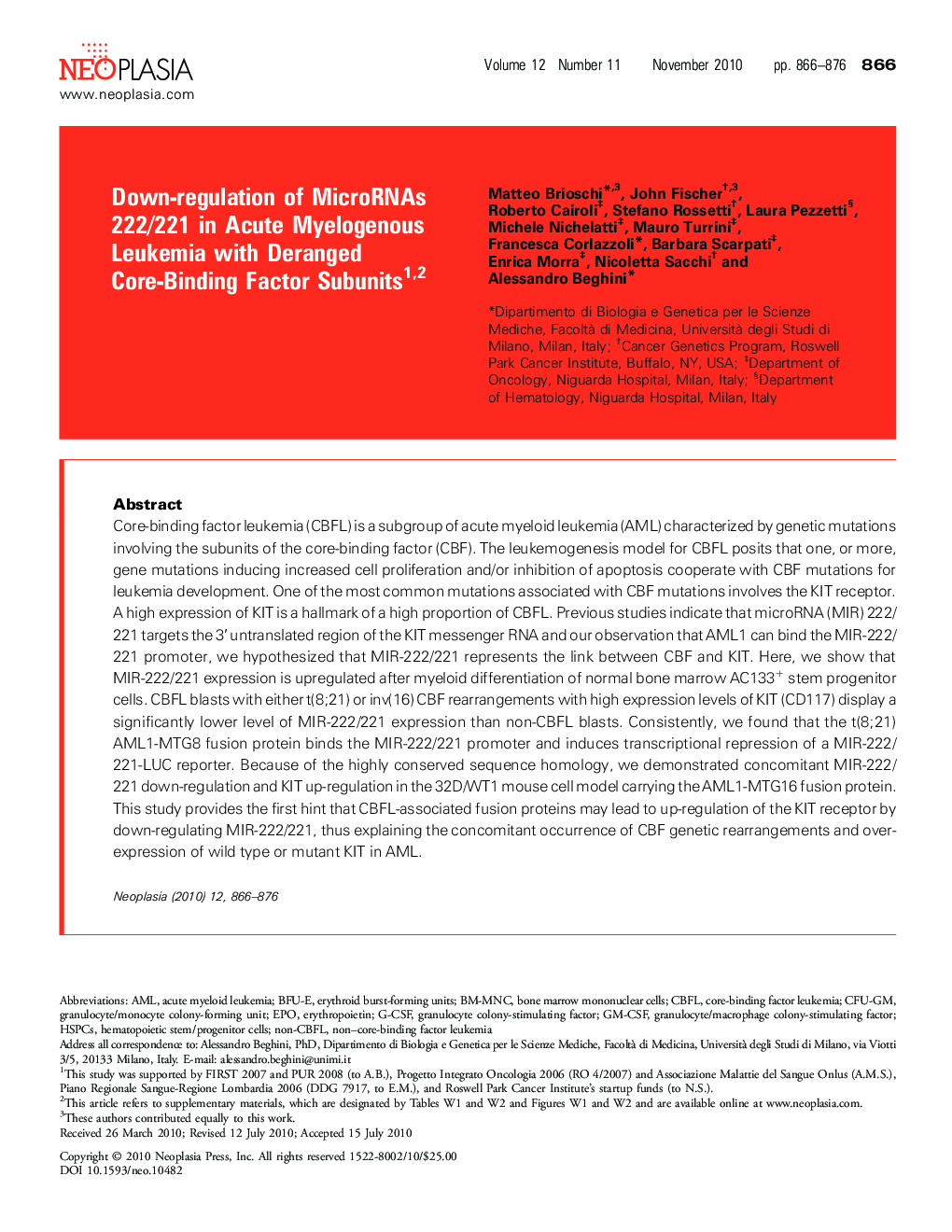| Article ID | Journal | Published Year | Pages | File Type |
|---|---|---|---|---|
| 2151909 | Neoplasia | 2010 | 13 Pages |
Abstract
Core-binding factor leukemia (CBFL) is a subgroup of acutemyeloid leukemia (AML) characterized by genetic mutations involving the subunits of the core-binding factor (CBF). The leukemogenesis model for CBFL posits that one, or more, gene mutations inducing increased cell proliferation and/or inhibition of apoptosis cooperate with CBF mutations for leukemia development. One of the most commonmutations associated with CBF mutations involves the KIT receptor. A high expression of KIT is a hallmark of a high proportion of CBFL. Previous studies indicate that microRNA (MIR) 222/221 targets the 3â² untranslated region of the KIT messenger RNA and our observation that AML1 can bind the MIR-222/221 promoter, we hypothesized that MIR-222/221 represents the link between CBF and KIT. Here, we show that MIR-222/221 expression is upregulated after myeloid differentiation of normal bone marrow AC133+ stem progenitor cells. CBFL blasts with either t(8;21) or inv(16) CBF rearrangements with high expression levels of KIT (CD117) display a significantly lower level of MIR-222/221 expression than non-CBFL blasts. Consistently, we found that the t(8;21) AML1-MTG8 fusion protein binds the MIR-222/221 promoter and induces transcriptional repression of a MIR-222/221-LUC reporter. Because of the highly conserved sequence homology, we demonstrated concomitant MIR-222/221 down-regulation and KIT up-regulation in the 32D/WT1 mouse cell model carrying the AML1-MTG16 fusion protein. This study provides the first hint that CBFL-associated fusion proteins may lead to up-regulation of the KIT receptor by down-regulating MIR-222/221, thus explaining the concomitant occurrence of CBF genetic rearrangements and overexpression of wild type or mutant KIT in AML.
Keywords
Related Topics
Life Sciences
Biochemistry, Genetics and Molecular Biology
Cancer Research
Authors
Matteo Brioschi, John Fischer, Roberto Cairoli, Stefano Rossetti, Laura Pezzetti, Michele Nichelatti, Mauro Turrini, Francesca Corlazzoli, Barbara Scarpati, Enrica Morra, Nicoletta Sacchi, Alessandro Beghini,
